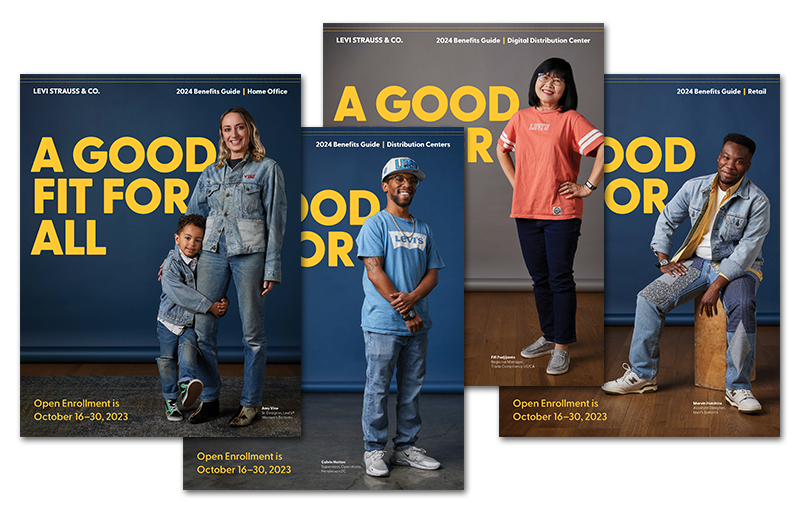
The Power of Storytelling in Benefits Communications
Some of my favorite moments as a mother were story time with my boys. They’d smell of JOHNSON’S® Head-to-Toe®, the day’s dirt washed away, and we’d cuddle together for a good story (or three). First it started out with board books like Goodnight Moon, Chicka Chicka Boom Boom, and Harry the Dirty Dog (we now have a Harry), and then as they got older, we graduated to chapter books like Charlotte’s Web, Code Talker, the Alex Rider series, and, of course, our favorite series, Harry Potter.
Why was story time so precious? One big reason was that it was a break from the mundane. Stories are interesting, and they capture our attention. And when stories are really well written, they can make us laugh, cry, or take our breath away. They can inspire us.
The same way my kids and I appreciate a good story, your employees do too. Including stories in your benefits communications is a great way to grab your people’s attention, increase engagement, and encourage a desired action, like completing a health screening, participating in a company-wide physical activity challenge, or signing up to work with a financial advisor. When you’re trying to influence employees to take action, having a colleague endorse a program or benefit goes a lot further than the endorsement of a senior leader or someone they don’t know.
I’ve seen how powerful storytelling can be in action. For many years I worked with a large aerospace company where I captured stories of employees who successfully improved their health by quitting tobacco, losing weight, increasing their physical activity, improving their emotional health through counseling, and so on. I loved this aspect of my job: interviewing employees and capturing their words and images with the goal of inspiring other employees to take the same, often life-changing, action, even if it was just one other person.
Ready to harness the power of storytelling in your benefits communications? Follow these tips to get started.
1. Real-Life Stories Are Powerful
Sometimes employee stories surface organically. When this happens, reach out to those employees to find out if they’d be willing to share their stories of how they’ve benefited from your programs. You can also let internal teams know that you’re on the hunt for good employee success stories and testimonials. Let your people know what types of stories you want to tell and whom they can contact within your organization if they have a story lead. And be sure to let them know if your need is something particular, such as promoting a health plan offering, well-being program, or financial planning tool.
Also, ask your health and well-being vendors to share the names of employees or dependents who have had a positive experience. The more people helping identify potential employees with compelling stories, the better!
2. Be Upfront About the Process and Objectives
Once you’ve identified an employee who has agreed to share their story, get the employee’s authorization in writing. You may want to involve your legal and privacy officers in developing an authorization form if you don’t already have one. Share with the employee the purpose of sharing their story, how and when their story will be used, and in what publications and collateral it will appear. Also, remind them that their personal health information is protected and will not be shared.
I always found it worked best to let employees know that they’ll be involved throughout the process. No quote of theirs will publish without their approval, and they’ll have the opportunity to review and provide feedback on their story. Just be sure to follow through on those promises.
3. Invest in Photography
A picture truly is worth a thousand words. It’s vital to capture impactful images. If your organization doesn’t have in-house photographers, consider a freelancer. Be clear with your photographer about the types of images you want (and any images you want to avoid). Ask for lots of shots, in various poses, and be deliberate about where the photo shoot takes place and who’s pictured with your employee. If the employee’s story involves a family member, include that person in some of the photos. If there’s significance to a particular work location or other setting, you may want to have the photo shoot take place at that spot. Let the employee know if you have suggestions about what they should wear for the photo shoot. It typically works best to wear neutral clothing and avoid wearing anything that may be controversial, like clothing with political slogans. Also, it’s a nice gesture to give copies of the photos from the photo shoot to the employee.
Your budget may not allow for professional photography. If that’s the case, ask the employee to provide images. They might have images that were taken by a photographer or a family member with a knack for photography. A graphic designer can edit any photos they provide.
4. Leverage Your Stories and Photography Across Multiple Channels
You’ve invested time and resources into capturing the story and images, so leverage your investment! Adapt the story across all your internal channels. Maybe the long-form story runs in your online daily newsletter, a shortened version appears on your intranet with a link to the full story, and the employee’s photo appears on a digital display with a short testimonial promoting the program or resource that helped them. If your organization uses social media, the images and a shortened version of the story or a video interview might work well.

Levi Strauss & Co. annual enrollment communications with employee photos
5. Request Additional Stories or Testimonials
When you run a story or include a testimonial in a communications piece, include a message asking other employees to send an email if they have a similar story or feedback to share about how their benefits have helped them. Provide an email address for where they can submit their stories.
6. Testimonials Are Powerful Too
You might find it easier to capture a simple sentence or two describing how a benefits program or resource helped an employee in a positive way. Testimonials can be very effective in motivating others to engage with the benefits you offer and to take action.
Another trend we’re seeing is a move toward video testimonials. And you don’t need to spend big bucks recording these testimonials. It’s possible to record high-end, quality videos over Zoom, Teams, or the video conferencing software of your choice.
7. Fictional Scenarios Work Well
If you aren’t able to find an actual employee to feature, consider developing employee personas that represent your employees and situations or decisions they may face. Use your employee census data when creating these scenarios. Include employees in different roles, salary ranges, geographic locations (if appropriate for your organization), and family situations. Make their stories relatable and realistic to help capture real-life situations or challenges that are common among your people.
The Bottom Line
If you’re looking for a creative way to bring your benefits communications to life and to find new ways to motivate your people to take action, consider using storytelling and featuring real-life employees or fictional personas. Because everyone loves a good story!
We’re proud to work with organizations that value their people. If you want to learn more, we’d love to talk.
Work with Us
We partner with organizations that value their people first. Let’s talk.

Bridget O’Meara, VP Senior Consultant, has more than 25 years of experience in strategic employee communications and works with some of our largest clients.
